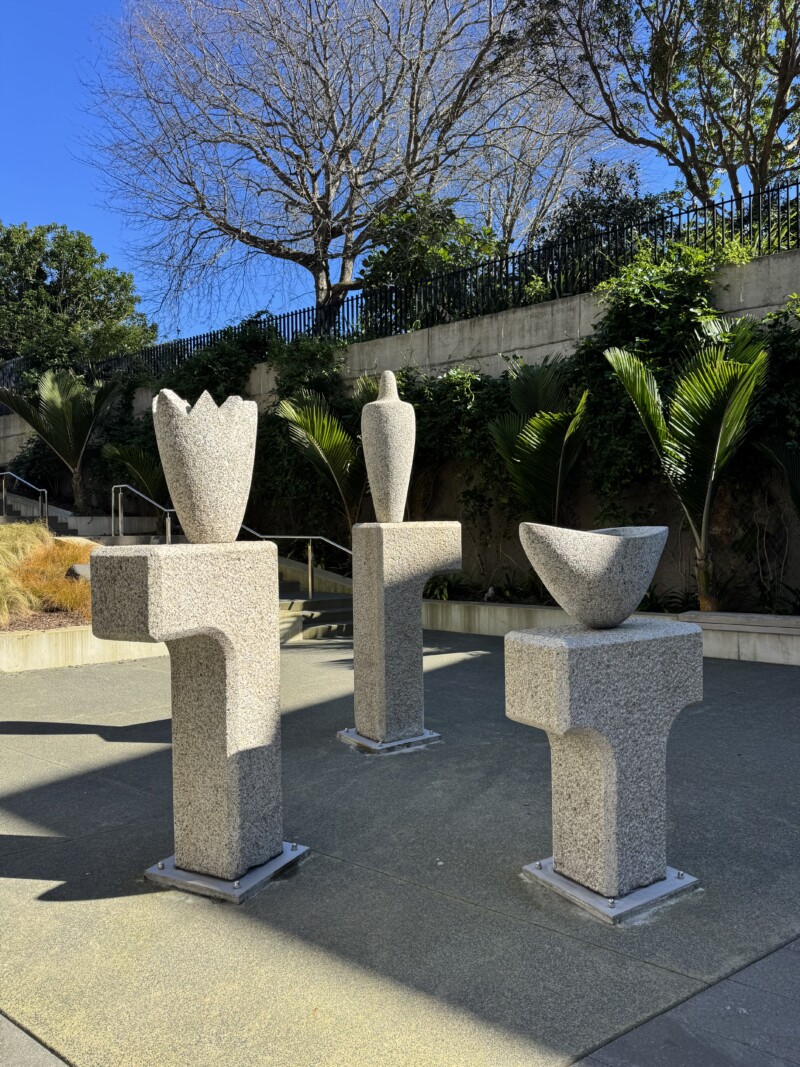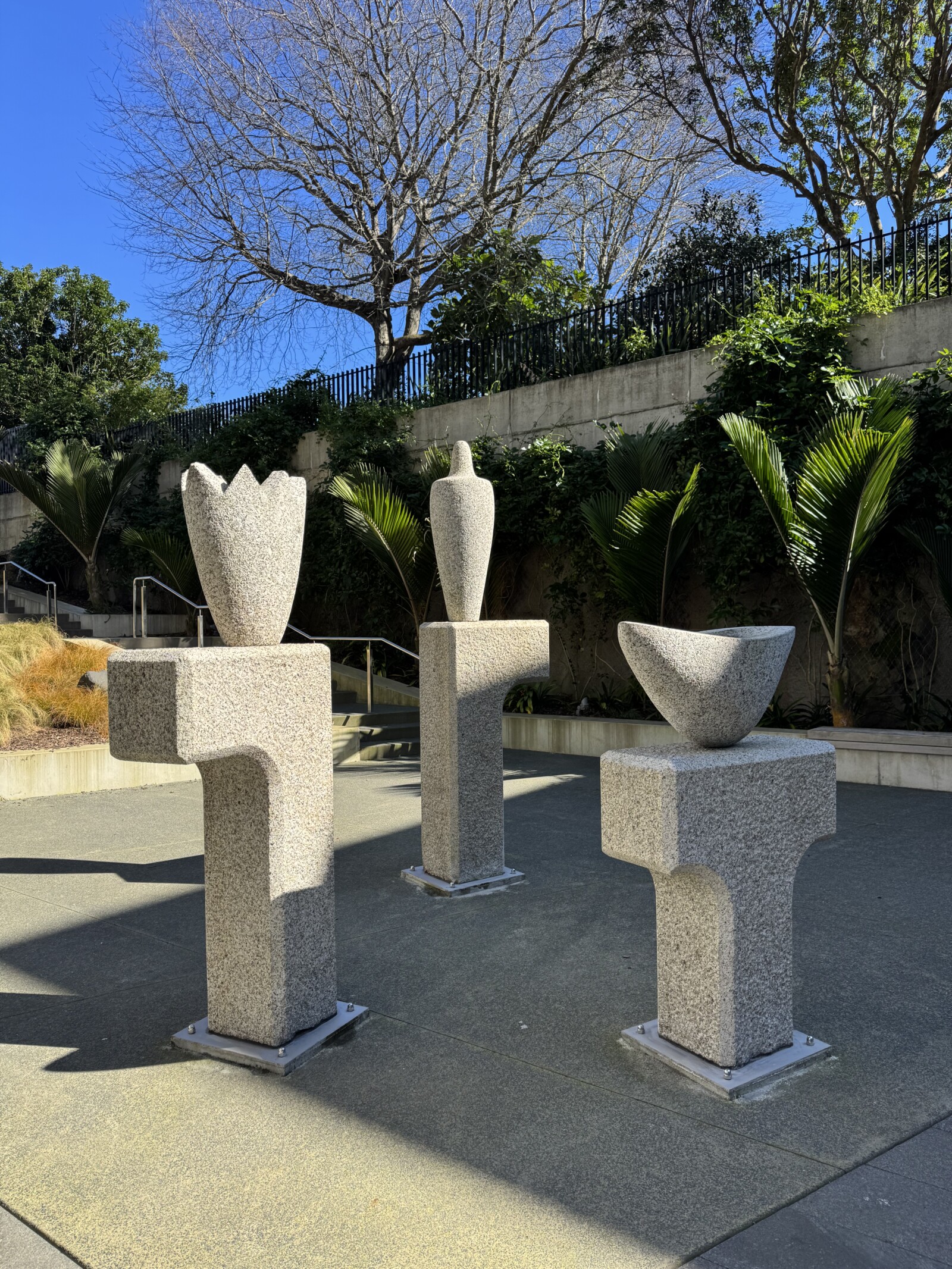GRAHAM, Brett;
Te Piriti Puāwai
1997
Cornish granite

Te Piriti Puāwai (‘The Flowering Bridge’) was commissioned by the Fletcher Challenge Trust in 1997 in order to make use of blocks of Cornish granite that had formed part of the original Waterloo Bridge in London. Built in 1817, the bridge was named for the famous 1815 battle that saw the final defeat of Napoleon by combined British and Prussian forces led by the Duke of Wellington. It was demolished in 1936. Blocks not needed in the construction of the new bridge over the River Thames were sent to the New Zealand Marble Company, at that time a subsidiary of Fletcher Construction. For many years they remained in the company’s Penrose plant yard until a sculptor willing to tackle the uniquely hard and difficult to carve granite could be found.
The three pedestals allude to the arches of Waterloo Bridge. Each holds an entity that connects with the history of Aotearoa. On the first is a bird-like sentinel, which refers to guardianship of the land, the responsibility of all who live and work in this place. The second carries a form that recalls both a waka and a bicorne hat of the sort worn by the Duke of Wellington and by Governor William Hobson, who signed the Treaty of Waitangi for the Crown. The inversion of the hat suggests that British actions have often fallen short of upstanding. On the third pedestal is a flower that evokes the blossoming of Aotearoa’s forests and natural resources, and connects the present to the future.
Te Piriti Puāwai was officially unveiled by Sir James Fletcher on Thursday 11 December 1997 at 810 Great South Road, Penrose, the headquarters of Fletcher Challenge (now Fletcher Building). It remained there until 2023, when it was removed. Since 2025, the work has been installed on the Grafton Campus of the University of Auckland Waipapa Taumata Rau, in a large courtyard within Building 507 at 22–30 Park Avenue.
Provenance
1997–
Fletcher Challenge Art Collection (later Fletcher Trust Collection), commissioned 1997

